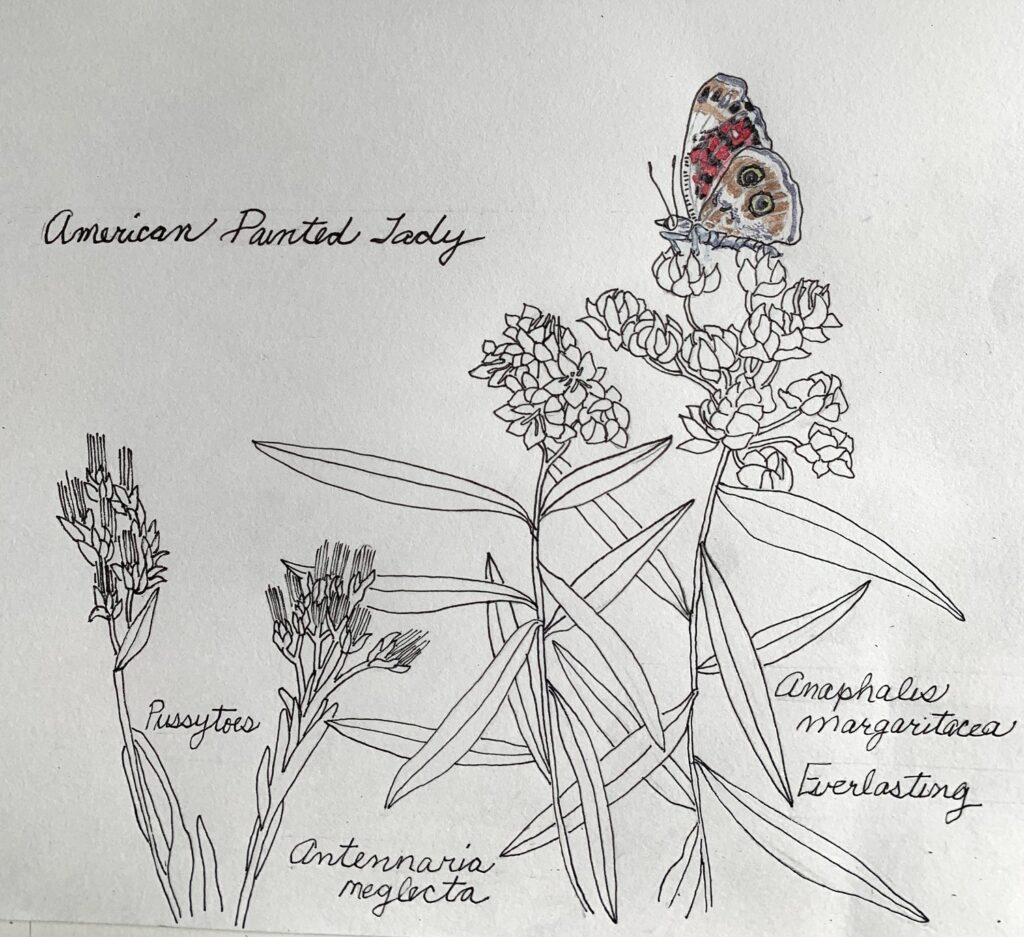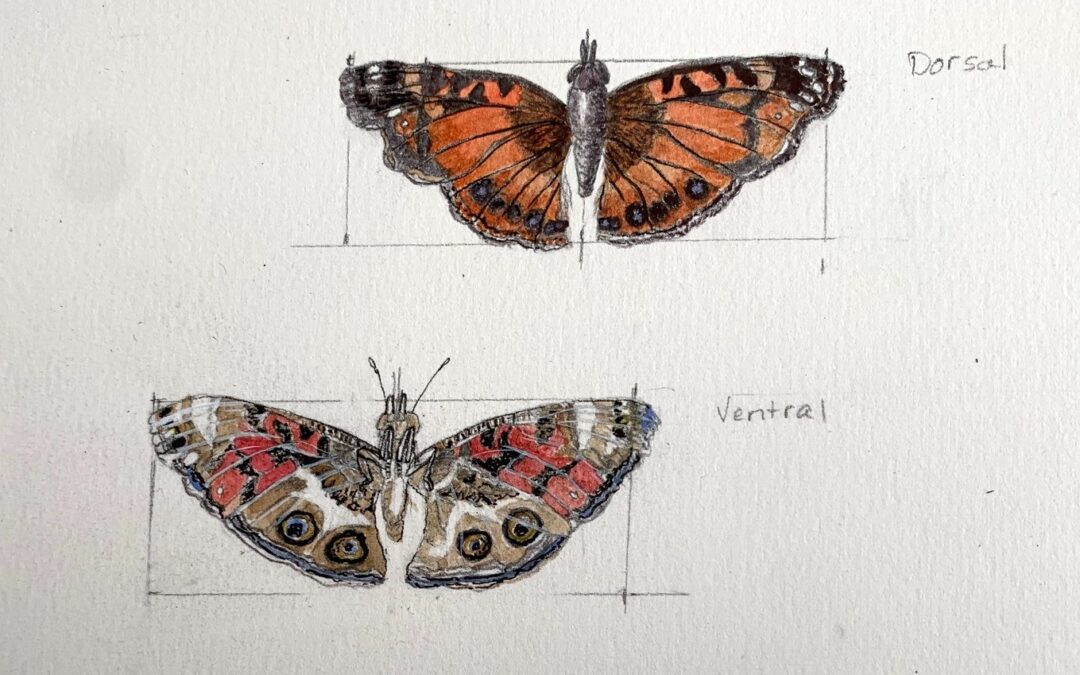One cold rainy morning recently in northern Wisconsin I was walking along a familiar road and found 2 wet butterflies on the ground.
When I returned and identified them, I realized that they were both migrating-type butterflies. One of them, the Monarch, is easily recognizable to most of us. The other, an American Painted lady, is not a butterfly most of us would notice. We would not even know that it migrates great distances each year.
The American Painted Lady (Vanessa virginiensis) had died before I picked it up. The Monarch was still alive, and after balancing on my cell phone all the way home, it flapped its wings and flew away.
When I arrived home, I spread the wings of the American Lady. I was surprised to discover that the top of the wings were bright orange. This small butterfly, which is only about 1.5 inches wide, is almost identical to a butterfly common in Europe called a Painted Lady (Vanessa cardui). Vanessa butterflies are common throughout much of the world. They are known for their migratory habits wherever they live.
There is one crescent shaped marking on the upper (dorsal) part of the top wing that varies between the American and the European species. In the European Painted Lady it is white. In the American Lady it is light orange.

The European Painted Lady has four small circular eyespots on its lower wing on the ventral (bottom) side, while the American Ladies have 2 large eyespots. These are not eyes for seeing, but help confuse predators into thinking the lower wings are the head. There are Vanessa butterflies found worldwide, including Australia and South America.
Painted Ladies are known for their migratory habits. The European butterflies will migrate from north Africa to Great Britain, Norway and Sweden. Their reproductive activity occurs while the butterflies are migrating in groups, which helps to create more successful populations of this butterfly.
In the U.S. it lays its eggs on species of the genus Gnaphallum. The plants I know here in northern Wisconsin are Pussytoes (Antennaria neglecta) and Pearly Everlasting (Anaphalis margaritacea). Pussytoes bloom in early spring, and Pearly Everlasting later in the summer. There are other species satisfactory for Painted Ladies’ larvae as well. It may be that as they travel north, the plants that are appropriate become available as spring turns to summer in northern climates.
This little dead butterfly may have gotten too far north too soon, and been overwhelmed by the cold rain. In North America the American Lady migrates north to Canada in the summer and south to Texas and Mexico in the winter. A program at Iowa State University is now studying the migrations of the American Lady and other Vanessa species.
It takes six generations of the Painted Lady butterfly to complete the migration in south Europe. The butterflies return to north Africa at very high altitudes, so are not often seen by people on the ground. This was discovered by careful tracking using radar technology. What about our American Lady migrations? How many generations does it take to get to West Texas from Canada? This fall I am planting pussytoes.


